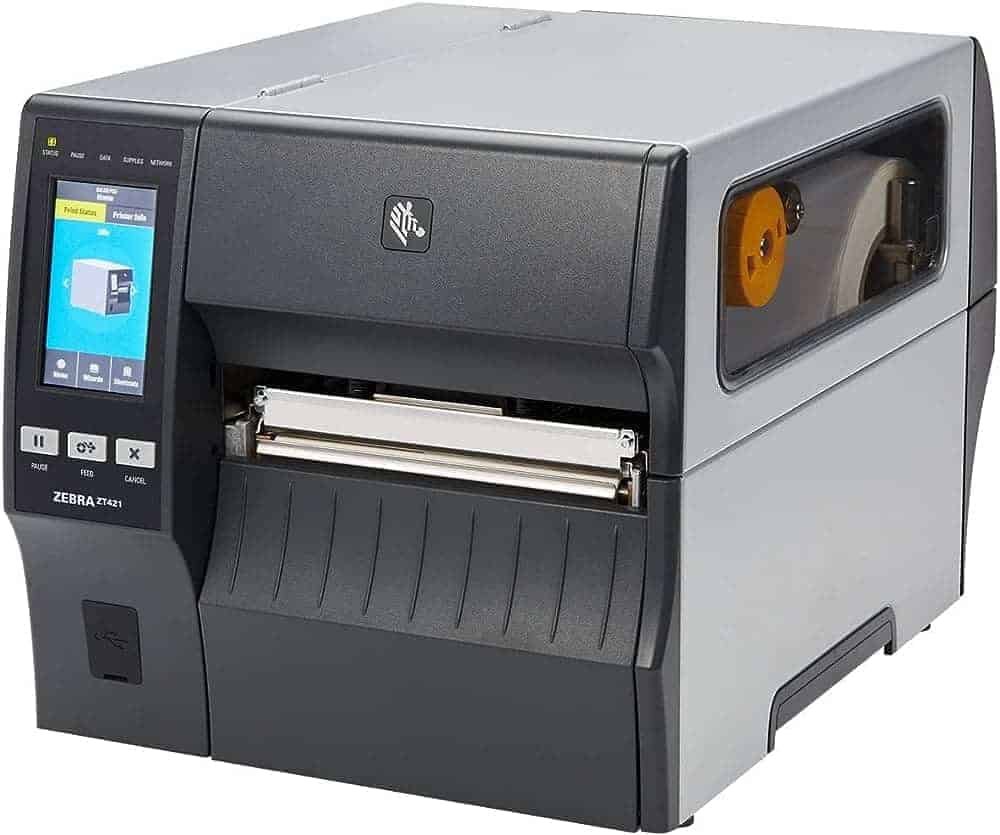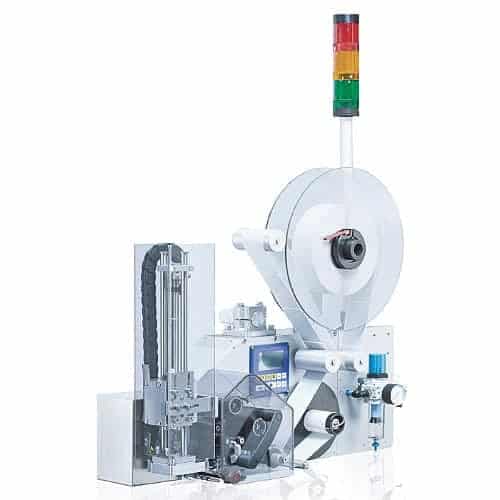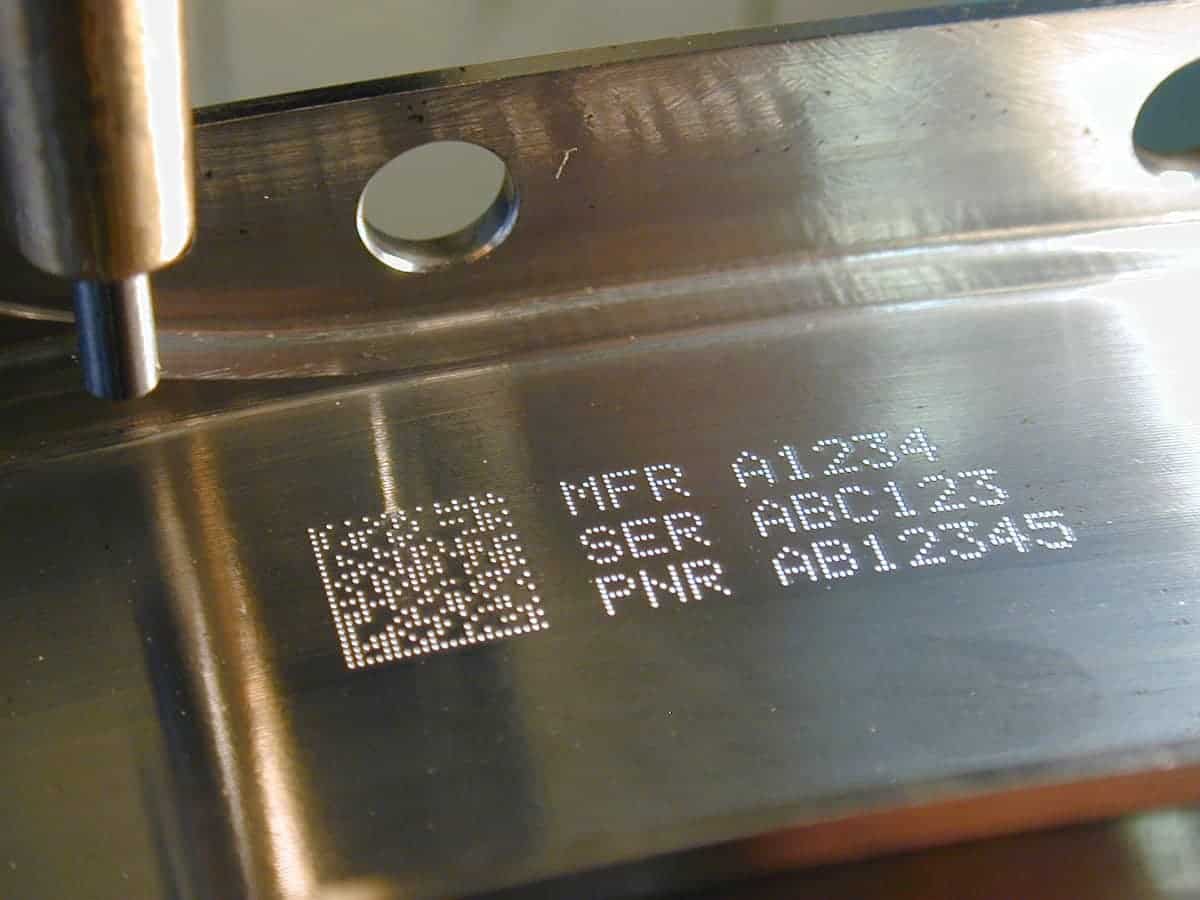Printing and application of labels
Supplies of top-quality Zebra printers for label printing and proven applicators from the German manufacturer Carl Valentin for direct application on the product.
Inline and thermal transfer printers
Save on label costs and print on your product directly with thermal transfer. Save costs and the environment. We will work with you to select the right printer from Carl Valentin’s wide range.
Dot peen marking
Depth marking of products that resists corrosion and is visible even after surface treatment.

Zebra label printers
They are professional printing devices designed especially for printing barcodes, labels, tags and other markings in production. They are used to efficiently track products and ensure proper labeling at every step of the supply chain. Printers can be interfaced with higher-level systems and code readers.
Zebra printers in production
Zebra printers are ideal for product tracking and marking in industries that work with labels and barcodes. If you need to mark directly on products, Zebra may not be the most suitable choice, see the inkjet or laser marking section for a better fit.
Benefits of Zebra printers for marking in production
High reliability
Robust construction and long service life, suitable even for harsh industrial environments.
Wide range of applications
Support for different formats and materials (paper labels, plastic labels, RFID technology).
Print accuracy
The high print resolution makes even very small barcodes and texts legible.
Maximum printing speed
Zebra printers can print large quantities of labels quickly, increasing productivity in production.
Possibility of portable models
Some models allow mobile printing on-site, increasing flexibility.

Carl Valentin label applicators
Carl Valentin label applicators are highly reliable devices for applying pre-printed or directly printed labels to products or packaging. This brand is known for its German emphasis on quality, precision and robustness of the equipment. Carl Valentin applicators are suitable for a wide range of industries such as food, beverage, pharmaceutical and logistics.
Key features of Carl Valentin label applicators
Flexibility of use
Adaptation to different types of labels (size, material, shape). Suitable for flat, rounded or intricately shaped surfaces.
Integration with label printers
Many models allow you to print and apply labels in one step, increasing efficiency.
Application accuracy
High precision label placement, minimizing errors and losses.
Speed and productivity
The applicators are designed for continuous operation with high application rates. Ideal for automated production lines.
Easy operation
User-friendly controls and the ability to quickly change to different products.
Modularity
Different applicator arms can be selected (e.g. swab, rotary or blow molding technology) according to specific production requirements.

Carl Valentin inline and thermal transfer printers
Inline thermal transfer printers use thermal transfer of ink from the ribbon to the media (film or packaging). They are ideal for printing directly onto the packaging without the need to glue the label.
Benefits
High quality
Sharp and detailed graphics, texts and barcodes.
Flexibility
Various materials (paper, plastic, foil).
Low operating costs
No labels are needed for printing, you mark directly on the foil.
Comparison of Inline Thermal Transfer vs. Label Thermal Transfer
| Inline Thermal Transfer | Thermal transfer on labels | |
| Speed | Very fast, suitable for high volumes. | Slower, suitable for medium to smaller series. |
| Integration | Easy, straight to the production line. | Rather separate devices. |
| Price | Higher investment at the beginning. | Cheaper equipment, more expensive operation. |
| Materials | Dyeing tape | Dyeing tape + label |

Dot Peen Marking
Dot peen marking belongs to contact marking, in which contact is made between the marking needle and the material. It is a very permanent marking that is visible even under a significant layer of paint or other surface treatment such as blasting or galvanizing. Dot peen marking can be hand, bench, combination or in a version for integration into a production line.
Dot peen marking in production
Dot peen marking is the ideal choice for industrial applications where permanent and durable marking is required, such as in the automotive, aerospace or engineering industries. Its low running costs, flexibility and durability make it a great choice for both batch and custom production. Conversely, for applications requiring fine, aesthetic marking, laser technology is the better choice.
Permanence of marking
The marking is resistant to wear, chemicals, high temperatures and other external influences.
Flexibility
Can be used on a wide range of materials, from metals (steel, aluminium) to plastics.
Cost-effectiveness
Low operating costs, no consumables (inks, labels, etc.).
Possibility of marking different formats
Easily create alphanumeric characters, datamatrix codes or logos.
Portable and stationary options
Compact models for mobile use and large stationary machines for automated production are available.
What to watch out for with Dot Peen Marking
Noise level
The mechanical process is noisy, which can be a disadvantage in a quiet working environment.
Limited use on the surface
Not suitable for fragile or very thin materials that could be damaged.
Visible deformation
The marking is deep, which may not be aesthetically appropriate for some products (e.g. design items).
Strength of material
Heavier marking of very hard materials (e.g. hardened steel) may require special equipment.
Manual work for some applications
More time and precision may be required for manual devices when marking more complex products.
Combined – over 50 years of experience in production optimization
What custom solution can we design for you?